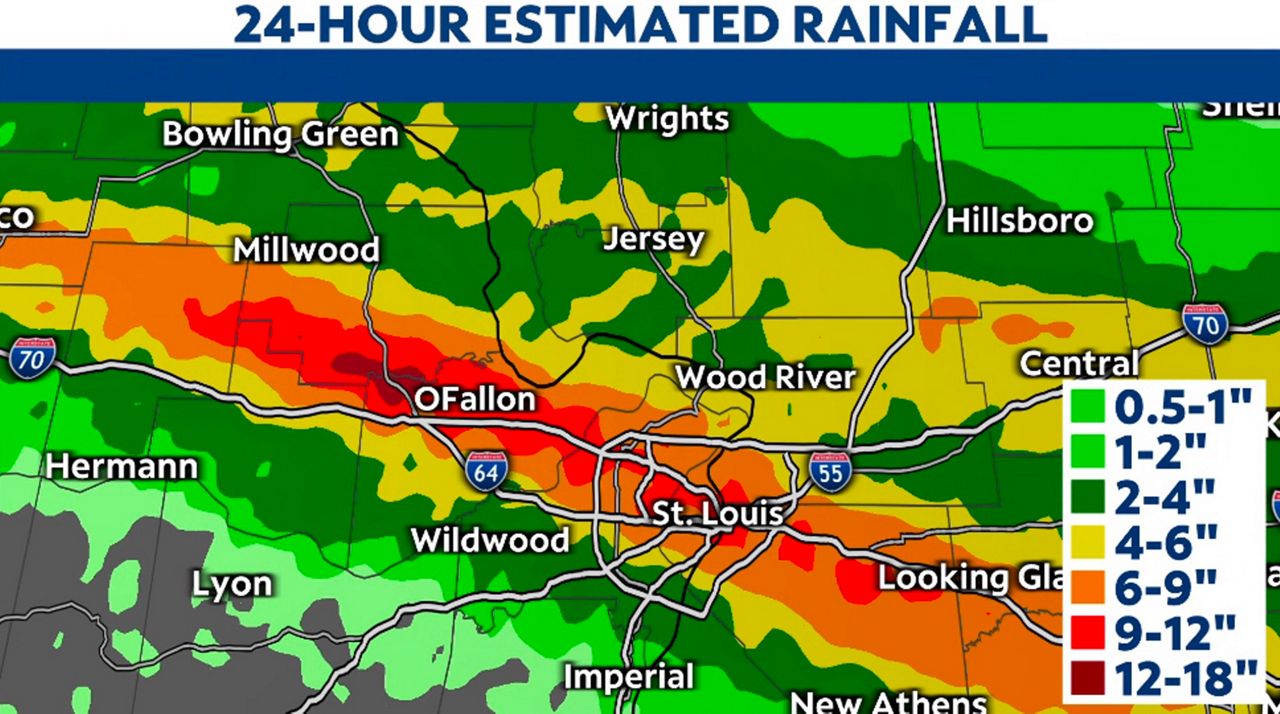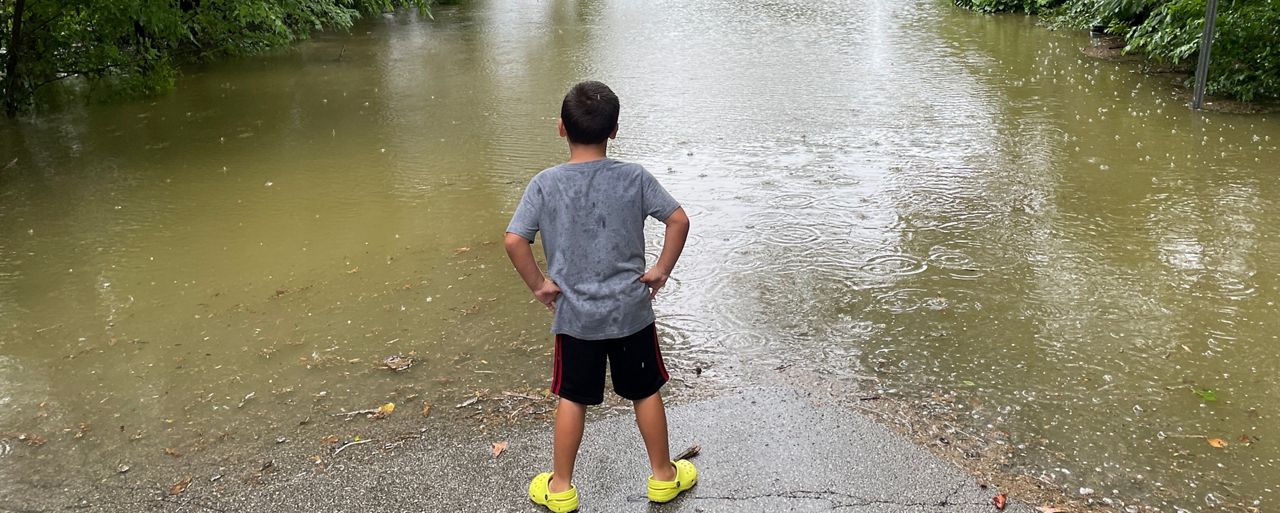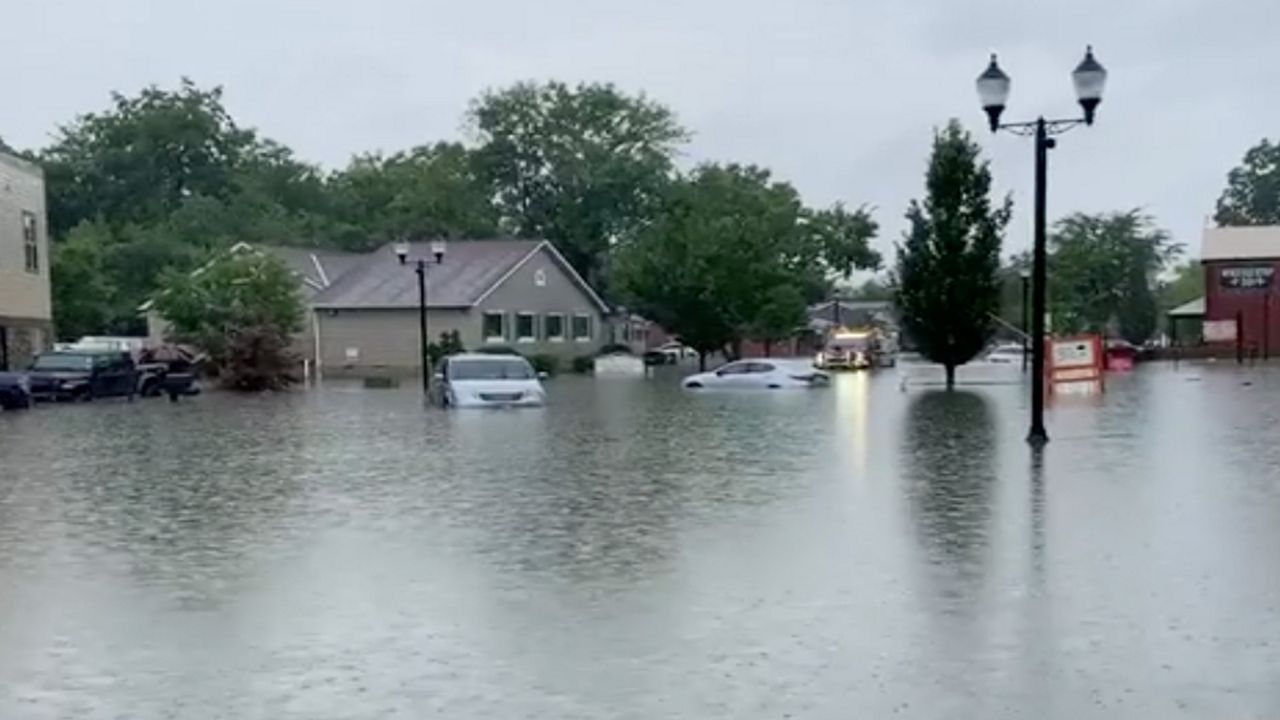July 26, 2022, made history as the wettest day on record at the St. Louis Lambert International Airport with 8.64 inches of rain. In fact, most of that rain fell within a few hours, causing widespread flash flooding.
A few days earlier, concerns about drought across the state had the Governor signing declarations. Rain was needed, but too much fell too quickly, resulting in major damage across the St. Louis region.
A stalled front combined with a weather disturbance brought storm clusters along it. These storms began “training,” or forming new storms along the same area, which resulted in almost a persistent thunderstorm from midnight through 8 a.m.
Rainfall totals ranged from an inch in Jefferson County to over 12 inches in parts of St. Charles County.

St. Peters in central St. Charles County was hit hard. That day, 12.86 inches of rain accumulated, resulting in water-covered roads and highways.
Interstate-70 near the Mid Rivers Mall exit had water covering it by 5 a.m. snarling early morning commuters. “Old Town” St. Peters looked more like a lake than a street with most of the homes and businesses inundated with water. With so much water in such a short period, water rescues had to be conducted.
The banks of Dardenne and Spencer Creeks overflowed, flooding homes and businesses. Covenant Park, which sits along Spencer Creek, had its tennis court badly damaged; one year later, the courts remain closed.

Lisa Bedian, St. Peters City Communications Director, said that the flooding in “Old Town” along Main Street and I-70 was not because of rising creeks but clogged drains. “City employees had to physically clear debris out of the drains to get the automated pumps working.”
Bedian acknowledges that this was “an unprecedented event” with so much rain in a short period. But she wants to remind residents that “everyone has a role to play.”
“When you mow the lawn, do not blow yard clippings or debris into the street because those clippings end up in the drains, which can clog them.”
Adding, “Several parks in the city are built to flood, helping mitigate the water. Lakeside 370 and The Woodlands can handle excessive water without causing damage to the equipment there.”

Other hard-hit areas that day include Hazelwood, Mo. where 130 residents had to be rescued from a flooded apartment complex. One year later, it’s clear the area is still not recovered from the flooding. Boarded-up, vacant buildings and abandoned cars are still prevalent across this region.
University City, Mo. saw 300 addresses condemned and at least half of those properties still haven’t been restored. The city continues to apply for funding from FEMA.
While this was certainly a 1-in-1000-year flood event, the risks of flooding in the St. Louis metro are continuing to rise with each heavy rain event. Metropolitan Sewer District expressed interest in reducing flooding dangers for the future but how much they can and will do will be determined by a public vote next spring.
Our team of meteorologists dives deep into the science of weather and breaks down timely weather data and information. To view more weather and climate stories, check out our weather blogs section.



